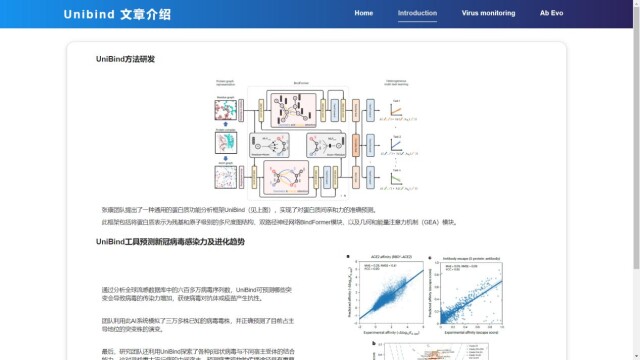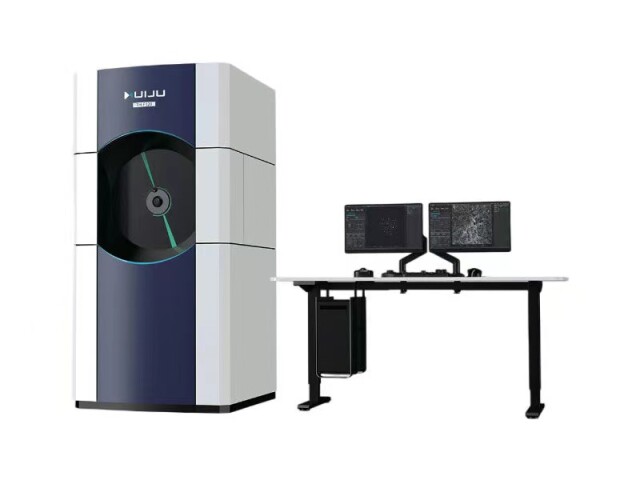In the heart of China's dynamic southern coast, the Guangdong-Hong Kong-Macao Greater Bay Area (GBA) stands as a beacon of innovation and technological progress. This bustling area, encompassing cities like Guangzhou, Shenzhen, and Hong Kong, is not just a hub for economic activity but also a crucible for scientific breakthroughs and technological marvels.
The GBA's contribution to global technology trends is both profound and impactful. The synergy between its cities, each bringing unique strengths to the table, fosters an environment ripe for innovation and collaboration.
The "UniBind" Artificial Intelligence Predictive System
One of the tasks of the Guangzhou National Laboratory is to accurately predict the current state and future trends of various infectious diseases. It also involves forecasting and assessing the effectiveness of all current treatment methods against these diseases. Can we predict the arrival of another virus before it hits, figure out how harmful it might be, and then effectively guard against it?
Zhang Kang, Distinguished Researcher of Guangzhou National Laboratory and Chair Professor of the Faculty of Medicine at Macau University of Science and Technology, said that in the Greater Bay Area, Macao and Guangzhou National Laboratory represent a model of cooperation among national-level laboratories.
The Guangzhou National Laboratory, dedicated to addressing critical scientific and technological challenges in respiratory diseases, has collaborated with the Macau University of Science and Technology to develop an artificial intelligence system named "UniBind" for predicting virus mutations.

UniBind. (Photo provided to GDToday)
By utilizing the robust artificial intelligence and computational capabilities to simulate virus mutation environments with extensive detected virus sequence data, "UniBind" forecasts potential virus resistance against antibodies or vaccines, thus predicting mutation trends. Even without in-person meetings, research teams can remotely monitor viral mutations.
"It provides a powerful tool for decision-making bodies in our country, as well as for research, development, and prediction within Guangzhou National Laboratory and other projects," said Zhang.
China's first domestically produced transmission electron microscope, the TH-F120
Chinese Academy of Sciences (CAS) academician Xu Tao, Deputy Director of Guangzhou National Laboratory, and director of the Bioland Lab, along with researcher Sun Fei, jointly initiated research related to this in 2016 at the Institute of Biophysics of CAS. In 2020, they established a comprehensive technical team at the Bioland Lab.
To further promote the industrialization of transmission electron microscope (TEM), the Bioland Lab, in collaboration with China's leading scientific instrument company CIQTEK, established Guangzhou Huiju Technology Co., Ltd., which is dedicated to commercializing TEM technology. The collaboration has witnessed the production of China's first domestically produced transmission electron microscope, the TH-F120.

China's first domestically produced transmission electron microscope, the TH-F120. (Photo provided to GDToday)
It is a significant achievement in China's technological advancement, specifically in the field of electron microscopy. TEMs are powerful tools used in material science, biology, and other fields for imaging at the atomic or molecular level.
According to Cao Feng, General Manager of Guangzhou Huiju Technology Co., Ltd., one of the core applications of the TH-F120 lies in drug development and vaccine research. The TH-F120's unprecedented ability to visualize material structures at the nanometer scale offers researchers invaluable insights into the molecular composition of viruses and pathogens. By directly observing, researchers can expedite the process of drug discovery and vaccine development.
Cao revealed that currently, over 70% of the research team members are hired from the GBA. In his view, besides the talent advantage, GBA also boasts a significant supply chain advantage.
The TH-F120's distinction as the first of its kind implies it's a pioneering product within China, marking a milestone in the country's capability to produce high-end scientific instruments domestically. This could enhance research and development in various scientific fields within China, reducing reliance on imported technology.
Reporter | Hannah, Xie Chunhong (intern)
Editor | Nan, Will, James
With help from Clarice.
















